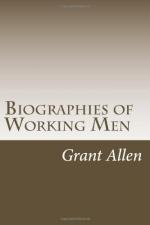Nor did he read only; he wrote too—verses, not very good, nor yet very bad, but well expressed, in fairly well chosen language, and with due regard to the nice laws of metre and of grammar, which is in itself a great point. Writing verse is an occupation at which only very few even among men of literary education ever really succeed; and nine-tenths of published verse is mere mediocre twaddle, quite unworthy of being put into the dignity of print. Yet Telford did well for all that in trying his hand, with but poor result, at this most difficult and dangerous of all the arts. His rhymes were worth nothing as rhymes; but they were worth a great deal as discipline and training: they helped to form the man, and that in itself is always something. Most men who have in them the power to do any great thing pass in early life through a verse-making stage. The verses never come to much; but they leave their stamp behind them; and the man is all the better in the end for having thus taught himself the restraint, the command of language, the careful choice of expressions, the exercise of deliberate pains in composition, which even bad verse-making necessarily implies. It is a common mistake of near-sighted minds to look only at the immediate results of things, without considering their remoter effects. When Tam Telford, stonemason of Langholm, began at twenty-two years of age to pen poetical epistles to Robert Burns, most of his fellow-workmen doubtless thought he was giving himself up to very foolish and nonsensical practices; but he was really helping to educate Thomas Telford, engineer of the Holyhead Road and the Caledonian Canal, for all his future usefulness and greatness.
As soon as Tam was out of his indentures, he began work as a journeyman mason at Langholm on his own account, at the not very magnificent wages of eighteenpence a day. That isn’t much; but at any rate it is an independence. Besides building many houses in his own town, Tam made here his first small beginning in the matter of roads and highways, by helping to build a bridge over the Esk at Langholm. He was very proud of his part in this bridge, and to the end of his life he often referred to it as his first serious engineering work. Many of the stones still bear his private mark, hewn with the tool into their solid surface, with honest workmanship which helps to explain his later success. But the young mason was beginning to discover that Eskdale was hardly a wide enough field for his budding ambition. He could carve the most careful headstones; he could cut the most ornamental copings for doors or windows; he could even build a bridge across the roaring flooded Esk; but he wanted to see a little of the great world, and learn how men and masons went about their work in the busy centres of the world’s activity. So, like a patriotic Scotchman that he was, he betook himself straight to Edinburgh, tramping it on foot, of course, for railways did not yet exist, and coaches were not for the use of such as young Thomas Telford.




